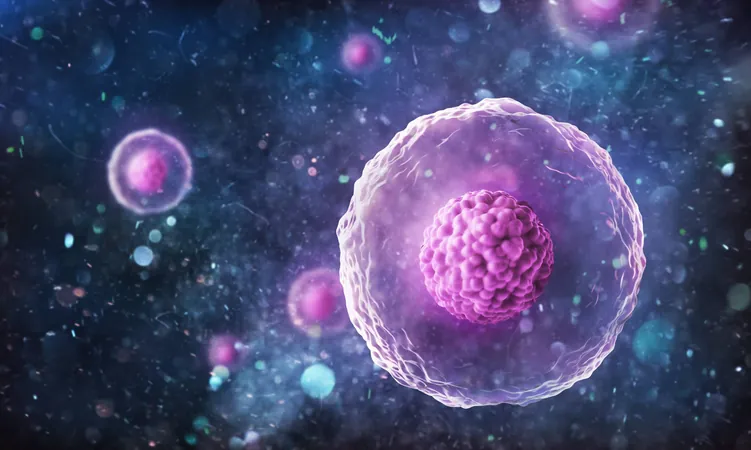
Breakthrough: MIT's Innovative Light-based Technique Decodes Cellular Signals Like Never Before!
2025-01-05
Author: Wei Ling
Introduction
In a groundbreaking advancement for biomedical research, researchers at MIT have unveiled a revolutionary technique for decoding cellular signals that holds the potential to transform our understanding of cell communication and its implications for conditions like arrhythmias and Alzheimer's disease.
The Need for Innovation
Traditionally, capturing these cellular signals has been hindered by reliance on wired connections, limiting the scope and quantity of data researchers could gather. However, this new biosensing method dispenses with the need for wires entirely by integrating wireless antennas known as organic electro-scattering antennas (OCEANs).
How OCEANs Work
These remarkably tiny antennas, measuring just one-hundredth the width of a human hair, are ingeniously designed to scatter light in response to minor electrical variations in their surrounding liquid environment. This alteration in light intensity can then be recorded using a sophisticated optical microscope, enabling researchers to observe cellular activities with astonishing accuracy.
Advantages Over Traditional Techniques
Unlike conventional techniques that aggregate data from numerous sensors, each OCEAN operates independently, providing unparalleled spatial resolution and sensitivity. This advancement means that scientists can now decode cellular signals with a level of detail that was previously unattainable.
The Technology Behind OCEANs
The antennas themselves are crafted from a specialized polymer called PEDOT:PSS, which responds to changes in electrical activity by modifying its refractive index. The intricate fabrication process involves the use of focused ion beams to create microscopic holes in a glass substrate, allowing the antennas to be “grown” through an electrochemical method.
Future Prospects
This innovative approach culminates in the development of a scalable chip that can accommodate millions of antennas, all poised to decode cellular signals while remaining durable enough to record data continuously for over ten hours. Designed primarily for in vitro studies, the sensor array allows for direct culturing of cells atop the OCEAN framework.
Conclusion
Looking to the future, the research team at MIT aims to further refine the OCEANs by testing them with real cell cultures. They envision enhancements through the integration with nanophotonic devices, which could significantly elevate their functionality, making this pioneering technology a potential game-changer in the realm of cellular signal decoding.
This advancement not only paves the way for improved diagnostics but also opens new avenues for treatment strategies, ultimately improving patient outcomes in a variety of conditions. Stay tuned as these developments unfold, promising to reshape the landscape of biomedical research!

 Brasil (PT)
Brasil (PT)
 Canada (EN)
Canada (EN)
 Chile (ES)
Chile (ES)
 Česko (CS)
Česko (CS)
 대한민국 (KO)
대한민국 (KO)
 España (ES)
España (ES)
 France (FR)
France (FR)
 Hong Kong (EN)
Hong Kong (EN)
 Italia (IT)
Italia (IT)
 日本 (JA)
日本 (JA)
 Magyarország (HU)
Magyarország (HU)
 Norge (NO)
Norge (NO)
 Polska (PL)
Polska (PL)
 Schweiz (DE)
Schweiz (DE)
 Singapore (EN)
Singapore (EN)
 Sverige (SV)
Sverige (SV)
 Suomi (FI)
Suomi (FI)
 Türkiye (TR)
Türkiye (TR)
 الإمارات العربية المتحدة (AR)
الإمارات العربية المتحدة (AR)